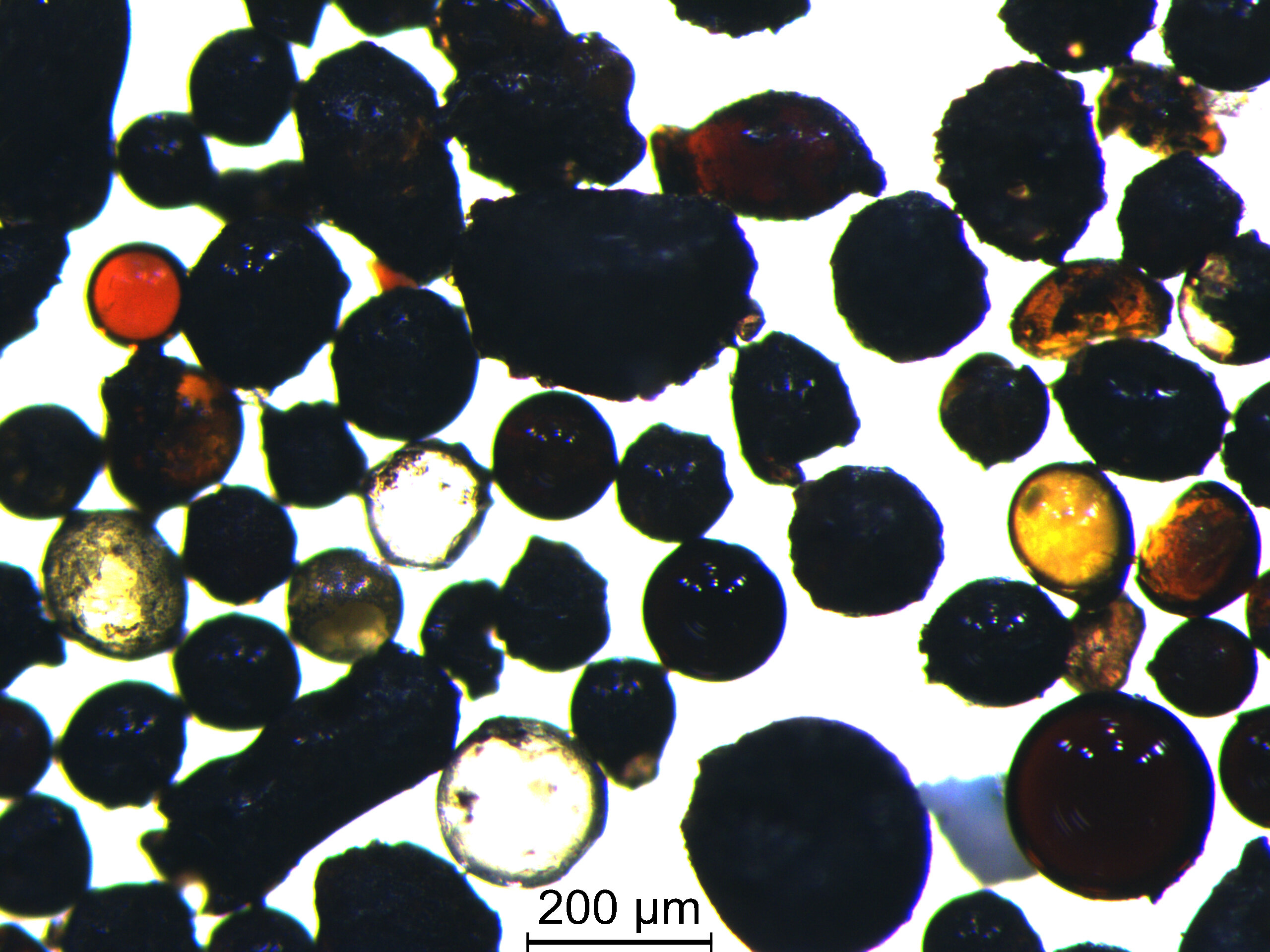Chang’e-5 glass beads. Photo credit: Beijing SHRIMP Center, Institute of Geology, CAGS
A research team led by Curtin has found that asteroid impacts on the moon millions of years ago coincided exactly with some of the largest meteorite impacts on Earth, like the one that wiped out the dinosaurs.
The study also found that major impact events on Earth were not discrete events but were accompanied by a series of smaller impacts, shedding new light on asteroid dynamics in the inner Solar System, including the likelihood of potentially devastating Earth-bound asteroids.
The international research team examined microscopic glass beads, up to 2 billion years old, found in lunar soil returned to Earth in December 2020 as part of China’s National Space Agency’s Chang’e-5 lunar mission. The heat and pressure of meteorite impacts created the glass beads and hence their age distribution should mimic the impacts and reveal a timeline of bombardments.
Lead author Professor Alexander Nemchin, from Curtin University’s Space Science and Technology Center (SSTC) in the School of Earth and Planetary Sciences, said the results imply that the timing and frequency of asteroid impacts on the moon may have been mirrored on Earth more about the evolutionary history of our own planet.
“We combined a wide range of microscopic analysis techniques, numerical modeling and geological surveys to determine how and when these microscopic glass beads from the moon formed,” said Professor Nemchin.
“We found that some of the ages of the moon glass beads matched exactly the ages of some of the largest impact craters on Earth, including the Chicxulub impact crater, which is responsible for the extinction of dinosaurs.
“The study also found that large impact events on Earth, such as the Chicxulub crater 66 million years ago, may have been accompanied by a series of smaller impacts, providing valuable information about the impact on Earth or the inner solar system.”

Chang’e-5-1 Landing Pad. Photo credit: CNSA Lunar Exploration and Space Engineering Center
Co-author Associate Professor Katarina Miljkovic, also of Curtins SSTC, said future comparative studies could provide further insight into the moon’s geological history.
“The next step would be to compare the data obtained from these Chang’e-5 samples to other lunar soils and crater ages to uncover other significant lunar-wide impact events, which in turn could provide new evidence of how this might impact life on the planet.” affects the Earth,” said associate professor Miljkovic.
-

Lunar probe Chang’e-5 gathers. Photo credit: CNSA Lunar Exploration and Space Engineering Center
-

Chang’e-5 Return Pod. Photo credit: CNSA Lunar Exploration and Space Engineering Center
-

Chang’e-5 lunar sample capsule. Photo credit: CNSA Lunar Exploration and Space Engineering Center
-

Chang’e-5 lunar floor of CE5C0400. Photo credit: Beijing SHRIMP Center, Institute of Geology, CAGS
The international collaboration was supported by the Australian Research Council and included researchers from Australia, China, the US, the UK and Sweden, including co-authors Dr. Marc Norman from the Australian National University and Dr. Tao Long of the Beijing SHRIMP Center at the Chinese Academy of Geological Sciences and Ph.D. Student Yuqi Qian from the China University of Geosciences.
The research paper entitled “Constraining the formation and transport of lunar impact glasses using the age and Chemical Compositions of Chang’e-5 glass beads” was published in scientific advances.
Lunar Trial tells ancient story through international collaboration
Tao Long, Restriction on the formation and transportation of moon impact glasses using the age and chemical composition of Chang’e-5 glass beads, scientific advances (2022). DOI: 10.1126/sciadv.abq2542. www.science.org/doi/10.1126/sciadv.abq2542
Provided by Curtin University
Citation: Moonglass shows lunar asteroid impacts mirrored on Earth (2022, September 28) retrieved September 28, 2022 from https://phys.org/news/2022-09-lunar-glass-moon-asteroid- impacts.html
This document is protected by copyright. Except for fair trade for the purpose of private study or research, no part may be reproduced without written permission. The content is for informational purposes only.
#Moon #Glass #shows #impacts #lunar #asteroids #reflected #Earth


Leave a Comment